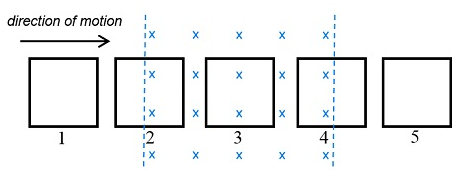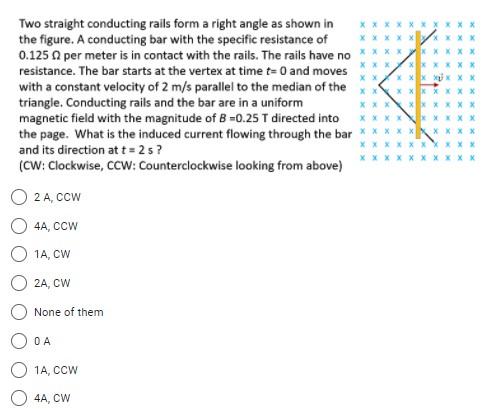Understanding "x*xxxx*x Is Equal To": A Comprehensive Guide To Cubic Expressions
Introduction: Decoding the Mystery
The phrase "x*xxxx*x is equal to" might initially appear as a riddle or a cryptic code, but it is actually a fundamental concept in algebra and mathematics. At its core, this expression refers to the multiplication of a variable 'x' by itself multiple times, which is mathematically represented as \(x^3\) or "x cubed." In this article, we will delve into the meaning of this expression, its significance in algebra, and how it applies to real-world scenarios. Whether you're a seasoned math enthusiast or someone brushing up on the basics, this guide will provide clarity and insight.
What Does "x*xxxx*x is Equal to" Mean?
In mathematical terms, the expression \(x \times x \times x\) (or \(x^3\)) means multiplying the variable 'x' by itself three times. This is known as raising 'x' to the power of three. For instance:
- If \(x = 2\), then \(x^3 = 2 \times 2 \times 2 = 8\).
- If \(x = 3\), then \(x^3 = 3 \times 3 \times 3 = 27\).
When we plot \(y = x \times x \times x\) on a graph, the result is a curved line known as the cubic curve. This curve has unique properties, such as intersecting the x-axis at specific points, which can help us solve cubic equations.
Applications in Real Life
1. Volume Calculations
One practical application of \(x^3\) is in calculating the volume of a cube. If the side length of a cube is 'x', the volume is given by \(x^3\). For example, if the side length is 4 units, the volume would be \(4 \times 4 \times 4 = 64\) cubic units.
2. Engineering and Physics
Cubic equations often appear in engineering and physics problems. For instance, they are used to model the behavior of certain systems, such as fluid dynamics or the motion of objects under varying forces. Understanding \(x^3\) helps engineers and physicists predict outcomes and design solutions.
3. Economics
In economics, cubic functions can model relationships between variables, such as production costs and output levels. These functions help businesses optimize resources and maximize profits.
- Xxxx Factor X X 1 X 4 4 X 1 Meaning Means
- Securely Connect Remote Iot Vpc Raspberry Pi Aws Download Windows
- Necati
- Raspberry Pi Batch Job Over Internet Remote Work From Home
- Kid And His Mom Cctv Video Original
Solving Cubic Equations
Solving equations like \(x \times x \times x = 2\) involves finding the value of 'x' that satisfies the equation. Let's break this down step by step:
- Start with the equation \(x^3 = 2\).
- To solve for 'x', take the cube root of both sides: \(x = \sqrt[3]{2}\).
- The cube root of 2 is approximately 1.26, so \(x \approx 1.26\).
Similarly, for equations like \(x^3 = 2023\), the solution would be \(x = \sqrt[3]{2023}\), which is approximately 12.65.
Graphical Representation
When we graph \(y = x^3\), the curve exhibits a distinctive shape. It passes through the origin (0,0) and extends in both positive and negative directions. Key features of the cubic curve include:
- One point of intersection with the x-axis (at \(x = 0\)).
- Asymptotic behavior as \(x\) approaches infinity or negative infinity.
This graphical representation helps visualize the behavior of cubic functions and aids in solving related problems.
Advanced Concepts: Differentiation and Integration
Differentiation is a process in calculus used to determine the rate of change of a function. For \(y = x^3\), the derivative \(dy/dx = 3x^2\) represents the slope of the tangent line at any point on the curve. On the other hand, integration calculates the area under the curve, which is useful in various applications, such as finding volumes or solving optimization problems.
Common Misconceptions
Some people might confuse \(x^3\) with \(3x\), but these are entirely different expressions. While \(x^3\) means multiplying 'x' by itself three times, \(3x\) simply means multiplying 'x' by 3. Understanding this distinction is crucial for solving equations correctly.
Conclusion: Unlocking the Power of Cubic Expressions
In conclusion, the expression "x*xxxx*x is equal to" is a gateway to understanding cubic expressions and their applications in algebra and beyond. By exploring \(x^3\) and its properties, we gain valuable insights into how variables interact in mathematical equations. Whether you're calculating volumes, modeling physical systems, or solving economic problems, cubic functions play a vital role. This article has covered the basics of \(x^3\), its graphical representation, and methods for solving related equations. With this knowledge, you're better equipped to tackle a wide range of mathematical challenges.
- Aagmaalcom
- Securely Connect Remote Iot Vpc Raspberry Pi Free
- Auto Farm Blox Fruit
- Malia Obama Wedding
- Redgifs

XXXXXX-35 | Interminable Rooms Fan Ideas Wiki | Fandom

Solved x x xxxx x 1ххах. direction of motion direction | Chegg.com

Solved XXXX X X X X K X X X X XXXX x XXXXXXX XXXXXX Two | Chegg.com